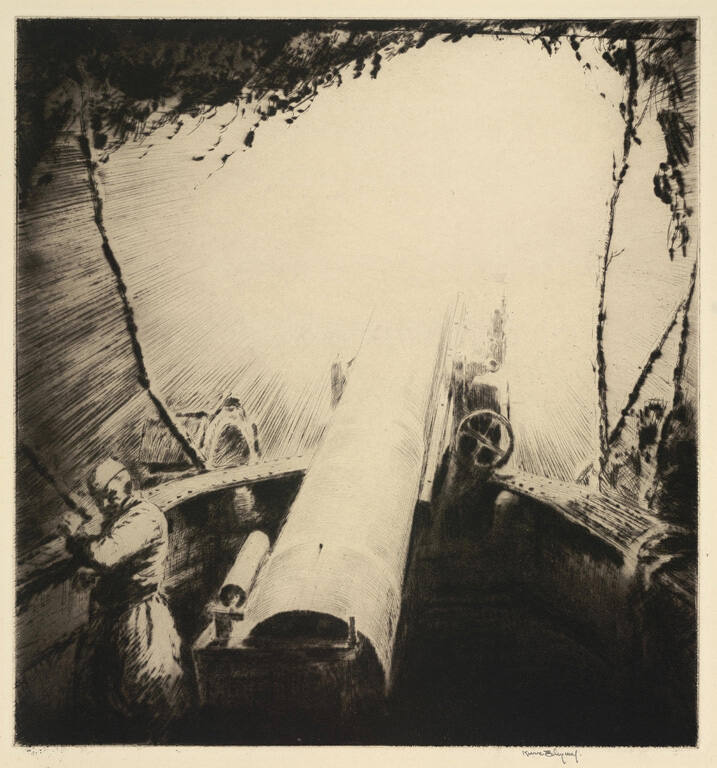
Object Details
Artist
Kerr Eby
Date
1919
Medium
Drypoint on thin ivory wove paper
Dimensions
9 1/4 x 8 5/8 inches (23.5 x 21.9 cm)
Credit Line
Gift of Charles M. Thorp, Jr.
Object
Number
64.0313
“To those who gave their lives for an idea, the men who never came back.” —Dedication of E(…)
“To those who gave their lives for an idea, the men who never came back.” —Dedication of Eby’s book War, 1936Kerr Eby was born in Tokyo, the son of Canadian missionaries. His parents returned to Vancouver when he was three, and his early years were spent in different cities across Canada. In 1907 Eby went to New York, studying at the Art Students League and the Pratt Institute. A friend of Childe Hassam, he was for several years an active member of the Cos Cob artist colony in Connecticut. Eby’s maternal uncle was Frederick Keppel, Sr., a leading and influential art dealer in New York at the end of the nineteenth and beginning of the twentieth centuries who had played a key role in introducing prints as a fine art form to America.When the war broke out Eby tried to get a commission as an artist. Unsuccessful, he enlisted and was assigned to the 40th Engineers, Artillery Brigade, Camouflage Division, which was sent to the war front where they helped to protect the troops. Eby frequently saw battle action, especially in northeastern France, including at Belleau Wood and Meuse-Argonne, and in 1918, he participated in the battles of Château-Thierry and Saint-Mihiel, which were instrumental in preventing the Germans from advancing on Paris. In addition to his work as a camoufleur, he also made drawings of the images he witnessed on the battlefield. Interestingly, Eby’s cousin Frederick P. Keppel was an Assistant Secretary of War for the United States during this time.In 1936, concerned about the unstable world situation that would soon lead to World War II, Eby published his book War, which illustrated twenty-eight prints and drawings he had made during his experience in World War I with an essay outlining his abhorrence of war and his opinion of its futility and barbarity. (“‘The War to End All Wars’: Artists and World War I,” curated by Nancy E. Green and presented at the Johnson Museum, January 21-June 11, 2017)
Discover More
Fortin de las Flores (Small Fort of Flowers), from the portfolio Ten from Leo Castelli
Frank Stella, Tanglewood Press, New York












